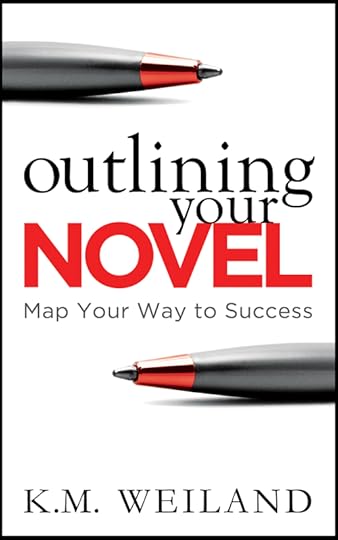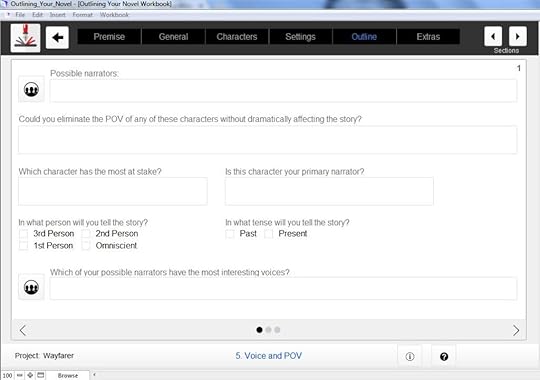6 Questions to Help You Choose the Right POV
 Stories are defined by their narrators. Narrating characters implicitly tell us whose story this is. More than that, they determine which facets of plot and theme will be emphasized. How do they do this? By also determining which elements will be eliminated or sidelined. In short, figuring out how to choose the right POV for your story is one of the most crucial decisions you will make.
Stories are defined by their narrators. Narrating characters implicitly tell us whose story this is. More than that, they determine which facets of plot and theme will be emphasized. How do they do this? By also determining which elements will be eliminated or sidelined. In short, figuring out how to choose the right POV for your story is one of the most crucial decisions you will make.
 As with all crucial decisions, I find I save myself the most stress and labor when I do my best to choose the right POV in the outlining stage, before I ever start writing the first draft. Most of the time, the main POV—the protagonist’s—is obvious. But not always.
As with all crucial decisions, I find I save myself the most stress and labor when I do my best to choose the right POV in the outlining stage, before I ever start writing the first draft. Most of the time, the main POV—the protagonist’s—is obvious. But not always.
Ask These 6 Questions to Choose the Right POV for Your Story
The above reasons are why I use the following six questions to help me narrow down and verify my choices.
1. Who are your possibilities for narrators?
The first step is to take a look at your list of candidates. Technically, every character offers the potential for a narrator, but likely only a few will rise to the top of the list. Your protagonist, your antagonist, and one or two minor characters who figure heavily in subplots might all catch your attention. Or perhaps there’s just a shadowy secondary character who fascinates you.
2. Could you eliminate the POV of any of these characters without dramatically affecting the story?
Once you’ve collected your dream list of possible narrators, it’s time to get realistic. The key to the successful use of POV is control. This is true whether you’re using first-person, third-person, or omniscient. Writing a story that offers a POV for every single character isn’t likely to work as well as a story that has carefully selected only the most necessary POVs.
 This choice isn’t just about providing POVs to characters who are present at interesting events. Even more importantly, it’s about choosing POVs that will frame the overall narrative and provide commentary on the theme, in order to create a cohesive and resonant effect in readers’ minds.
This choice isn’t just about providing POVs to characters who are present at interesting events. Even more importantly, it’s about choosing POVs that will frame the overall narrative and provide commentary on the theme, in order to create a cohesive and resonant effect in readers’ minds.

All of these questions (and much more) are included in the Outlining Your Novel Workbook software.
3. Which character has the most at stake?
If you’re uncertain whether some of your possible narrators qualify as prime candidates for POVs, the first question to ask is how much each person has at stake to lose in the overall conflict. The mother tracking down her kidnapped son is going to offer a much more interesting perspective than the beat cop who wrote down her initial statement.
Your protagonist should, of course, be the character with the most at stake. (And, if not, you might be telling the wrong person’s story.) But this question provides an easy litmus test for determining the comparative worth of minor POVs. Are they as interesting as the protagonist’s, thanks to their high stakes? If not, they probably don’t deserve to be given POVs.
4. In what person will you tell this story?
Once you’ve chosen which characters will lend their perspectives to your story, it’s time to figure out which “person” will best serve their narratives.
The most common choices are:
THIRD-PERSON POV
The third-person POV tells the story in the third-person, referring to all the characters with the third-person pronouns “he” and “she.” This can be a POV of varying depth, either skimming the surface of the POV character’s consciousness, or digging down deep.
FIRST-PERSON POV
In a first-person POV, the protagonist is telling the story directly to readers and referring to himself by the first-person pronouns “I” or “me.” This is, perforce, a deep POV.
OMNISCIENT POV
The omniscient POV tells its story from the perspective of a distant narrator who is able to observe the thoughts and motives of all the characters. (I have written about the challenges and limitations of the omniscient POV here.)
5. In what tense will you tell this story?
A decision closely related to the previous one is that of tense. Will these characters be better served by telling their stories in past or present tense?
Past tense
Tells the story as if it has already happened, using past-tense verbs, such as: “She left the police station and decided to go after her son herself.”
Present tense
Tells the story as if it is playing out in real time, using present-tense verbs, such as: “She leaves the police station and decides to go after her son herself.”
6. Which narrators have the most interesting voices?
Finally, it’s time for the most important test of all: your characters need to audition their voices on the page. A fantastic narrative voice can be the difference between an okay book and an excellent one. Test all of your potential narrators in a one- to three-paragraph stretch of narrative.
Do their voices all sound the same—or does one pop out as obviously the most interesting? Which is the easiest and most fun for you to write?
With any luck, the answers to this question will line up with your discoveries in the previous questions—and you’ll know exactly which character(s) is best suited to bringing your story to life in the first draft.
Wordplayers, tell me your opinions! How did you choose the POV for your current story? Tell me in the comments!
The post 6 Questions to Help You Choose the Right POV appeared first on Helping Writers Become Authors.



